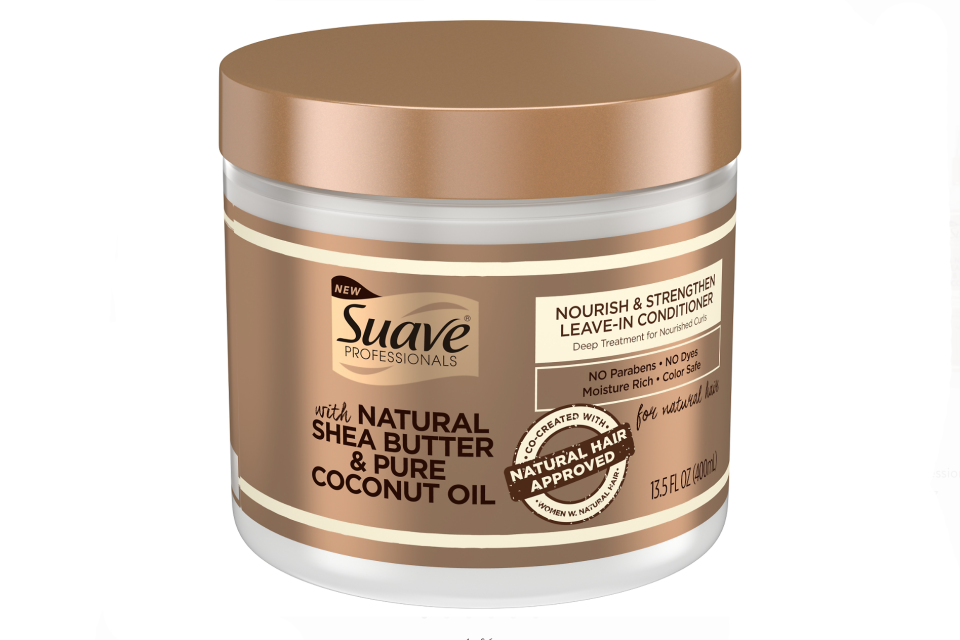7 tips for successfully transitioning your hair from relaxed to natural
If you have naturally textured hair, you know that styling it and caring for it can be a journey. That’s why we created The Curl Corner, a monthly column that celebrates the versatility of textured tresses. It will cover everything from how to properly style your coils to how to protect them, and will include tons of expert input on curl patterns of all types. In this month’s column, NYC-based writer Blake Newby shares how she transitioned from relaxed to natural hair.
I transitioned my hair to natural when I was 19. The decision was by force thanks to a perm gone wrong, and at the time, I had no clue what I was doing, but I knew one thing: I didn’t want a big chop. As my friends will tell you, I always talk about how big my head is. That said, a short pixie or TWA just wasn’t in the cards for me. So I did what I had to do. I transitioned, for two years in fact, before I finally cut all the permed hair off. And while you may be thinking, “how hard could that really be?” let me be the first to tell you that at times it was rough.
The journey was filled with bad hairdos, a lot of trial and error, and serious thoughts of relaxing my hair again, yet I stuck to it. But now, there are endless tips out there to make for a smoother transition, so if you’re thinking about taking the plunge, know that your journey doesn’t have to be as difficult as mine was. I chatted with two top Hollywood hairstylists about how to make the process as smooth as possible.
A post shared by Blake Newby (@blakelawren) on Sep 16, 2018 at 6:09am PDT
But first, it’s important to touch on the benefits of transitioning rather than big chopping. “You get to keep your length,” Tallulah “Lulu” Marcelin, natural hair and scalp expert and owner of I Love Lulu Hair Cafe, says. “Just because you’re ready to go natural doesn’t mean you are ready to go short. By allowing your hair to be cut in stages, [it] gives you time to gradually adjust to the difference in texture and length.” Angela C. Styles, celebrity hairstylist, agrees. “You still have your hair!” she says. “It’s not as dramatic of a change.”
Check out five tips for a successful transition from relaxed to natural hair that will help you retain your length and hair health every step of the way.
1. Keep textures consistent if wearing protective styles
While the concept may sound confusing, it’s really not—if styled correctly, your budding curl pattern will go undisturbed. “If you are transitioning from a relaxer or heat damage, I suggest keeping the new growth straight using the flat iron or just a blow dry during protective styling,” Marcelin says. This includes braids, twists, and even weaves. “This allows the relaxed texture to remain consistent and not snap off from the natural texture which is stronger.”
A post shared by Blake Newby (@blakelawren) on Oct 18, 2018 at 7:23am PDT
Think about it—you’re probably transitioning your hair at its weakest, so continuity is a must.
2. Hydrate, hydrate, hydrate
Moisturized hair is a must all of the time, but especially during a transition from relaxed to natural hair. “You should use a great moisturizer (leave-in or rinse-out conditioner), a natural oil for lubrication, and a silk scarf close when transitioning,” Marcelin says. And if you’re wearing a protective style, that moisture is even more important.
undefined

3. Trim every six to eight weeks
“I suggest trimming every 8 weeks at 1 inch,” Marcelin says. “This means that your hair length will stay the same for a while until you remove all of the hair you are transitioning from. The good news is, with each trim you are closer to healthier and natural hair!”
However, Styles adds that at some point, whether you’re at your desired length or not, all the hair may have to go. “[For tighter textures] you will have to cut the straight strands because it will get crazy, but until then just trim until you’re ready to go all the way.”
4. Don’t expect wash n’ gos
While you’ll have the urge to check out your natural curl pattern during the process, rocking a wash n’ go while transitioning will surely result in an inconsistent look. “Some of the biggest mistakes made when transitioning are trying to wear your hair in a wash and go with two different textures,” Marcelin says. “The roots are curly and the hair is straight.”
5. Give your hair time to breathe in-between protective styles
One major mistake I made during transitioning was wearing back-to-back protective styles—I never gave myself time to properly care for my new-growth or learn my curl pattern. “Don’t keep your protective styles for more than eight to ten weeks,” Styles suggests. “You want to give your scalp the proper care and the hair needs time to breathe.”
A post shared by Blake Newby (@blakelawren) on Mar 14, 2017 at 1:02pm PDT
6. Be patient
Your hair will not be down your back in a month, and it may not be down your back in a year, but that’s normal.
undefined
If you want to assist and speed up the process, there are things you can do. “Proper circulation, drinking lots of water, and taking growth vitamins help the hair grow faster and stronger,” says Styles.
7. Alternate hairstyles
Weaves, braids, and twists aren’t your only options. Other low-maintenance styles work just as well when transitioning from relaxed to natural hair. “Ponytails and buns are a good hairstyle for transitions so enjoy the process,” Styles says.

 Yahoo News
Yahoo News 
